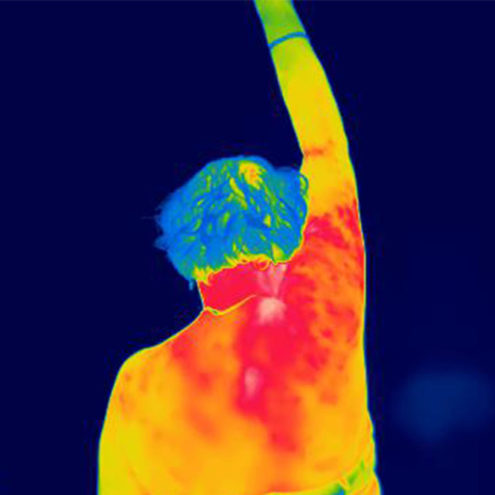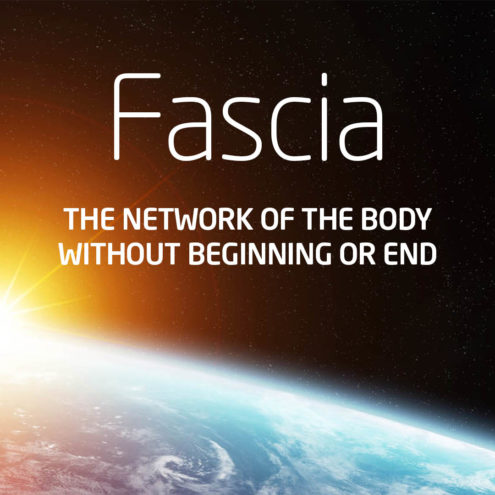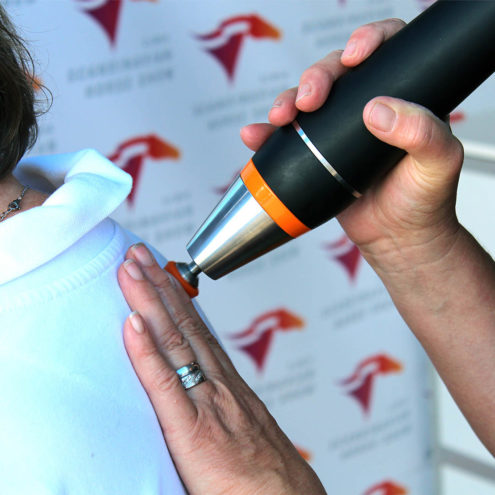Temporomandibular Joint Pain: Causes and Treatment

TMJ pain is a condition that affects the jaw joints and the muscles around them. These joints are crucial for our speech, chewing, biting, swallowing and breathing. Pain in the jaw joints can significantly affect quality of life as we humans use our jaw a lot every day.
What is temporomandibular joint pain?
Description of temporomandibular joint pain and its characteristics
TMJ pain refers to pain or discomfort in the jaw, often localized to the temporomandibular joint (TMJ), which connects the lower jaw to the skull. The TMJ is one of the most used joints in the body and enables movements such as chewing, talking and yawning. Pain in the TMJ can be acute or chronic and can affect one or both sides of the face.
Characteristics of temporomandibular joint pain include:
A dull or sharp pain in the jaw
Soreness around the temporomandibular joint
Radiating pain to the face, neck or ears
Feeling of stiffness or fatigue in the jaw muscles
Common causes of temporomandibular joint pain
Temporomandibular dysfunction (TMD)
Temporomandibular dysfunction (TMD) is one of the most common causes of jaw joint pain. TMD is an umbrella term for problems affecting the jaw joint and surrounding muscles. The causes of TMD can be multifactorial, including:
Bruxism (teeth grinding or pressing teeth)
Malocclusion (incorrect bite)
Arthritis
Joint injuries or trauma
Overload or damage to the temporomandibular joint
Overuse of the jaw muscles, for example by excessive chewing of gum or biting on objects, can lead to overload and pain in the jaw joint. Trauma, such as a blow to the jaw or a whiplash injury, can also cause acute or chronic jaw joint pain.
Symptoms of temporomandibular joint pain
Pain or tenderness in the jaw when chewing, gaping, or other jaw-related movements
One of the most prominent symptoms of temporomandibular joint pain is pain or tenderness that is aggravated by chewing, gaping or other jaw movements. The pain can be continuous or come and go, often worsening in the morning or after periods of intense jaw use.
Difficulty opening or closing the mouth completely
People with TMJ pain may experience limited movement of the jaw, making it difficult to open or close the mouth fully. This can lead to the jaw feeling ‘locked’ or ‘stuck’ in a particular position, which can be both painful and distressing.
Clicking, snapping or scraping sounds in the jaw when moving
Another common symptom of TMJ pain is various sounds from the jaw joint when moving, such as clicking, popping or scraping. These sounds can occur when the jaw joint does not move smoothly due to changes in the articular cartilage, disk or surrounding tissues.
Treatment of temporomandibular joint pain
Pain relief with medication and anti-inflammatory drugs
To reduce discomfort and inflammation in the temporomandibular joint, pain-relieving and anti-inflammatory drugs can be effective. Common medications include:
Nonsteroidal anti-inflammatory drugs (NSAIDs), such as ibuprofen
Analgesics, such as paracetamol
Muscle relaxants to reduce muscle tension
Use of a face mask or mouth guard
Mouthguards or occlusal splints are often used to reduce congestion and stress on the jaw joint, especially for people suffering from bruxism. These devices are usually custom-made to fit the individual’s teeth and bite, and they can be worn during the night to prevent teeth grinding and clenching.
Physiotherapy and exercises
Physiotherapy can play an important role in the treatment of TMJ pain. A physiotherapist can devise an exercise program to improve jaw function, strengthen muscles and reduce tension in the jaw joint. Common exercises include:
Stretching and mobility exercises for the jaw
Strengthening exercises to improve muscle strength and stability
Relaxation techniques to reduce muscle tension and stress
How can we help you with your temporomandibular joint pain?
By understanding the cause of tempromandibular pain, the FasciaClinics can offer targeted fascia treatments that address both the immediate symptoms and the underlying causes.
Fascia is the network of connective tissue that binds and permeates everything in our body. All cells, tissues (even bone), muscles and organs contain fascia. Fascia is also very rich in pain receptors, known as nociceptors, which respond to stimuli such as pressure and send signals to the central nervous system where they are interpreted as pain.
At the FasciaClinics, we take a holistic approach to treating pain in the jaw joint. Our team of therapists use fascia therapy to relieve tension and pain in the body. A fascia treatment focuses on dissolving tension and adhesions in the fascia and increasing its flow. By reducing pressure and increasing circulation, cell membranes can more easily absorb nutrients and release waste products. Fascia therapy can thus promote healing of the area. The treatment is pleasantly relaxing and painless. It gets the whole body flowing and helps you balance your posture so that the body is evenly loaded.
By combining medical expertise with personalized wellness care, we can help you relieve pain, improve jaw function and prevent future problems with temprormandibular joint. Contact us to discuss your symptoms and develop a treatment plan that fits your needs.
TMJ pain can be a challenging and persistent condition, but with the right treatment and support, you can regain your quality of life and function. Contact us at Fascia Clinics today to book a consultation and begin your journey to pain freedom and better health.
 Search
Search


































